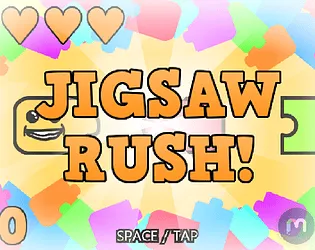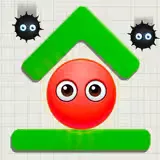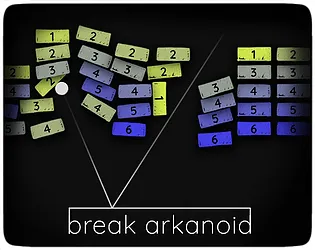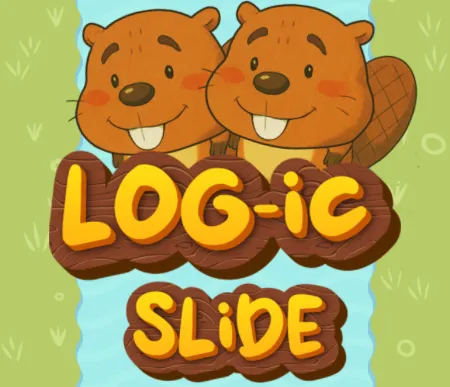Sliding Games
Sliding Puzzle Games — Strategic Movement on Grids
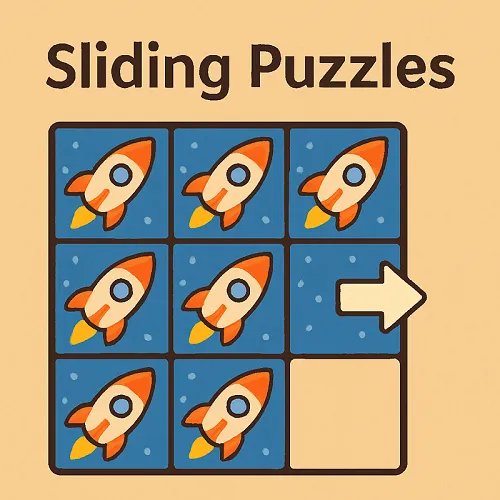
Sliding puzzle games use directional movement on grids as their core mechanic. Whether sliding tiles to complete images, moving pieces until blocked by walls or other pieces, or navigating characters through maze-like environments using slide-until-stopped movement, these puzzles transform simple directional input into complex strategic challenges.
The defining characteristic: movement continues in chosen directions until something stops it. You can't stop mid-slide; you commit to full movement until hitting obstacles. This constraint transforms basic movement into intricate puzzles requiring planning and spatial reasoning.
Why Sliding Mechanics Create Deep Puzzles
Commitment to Direction — Unlike free movement, sliding commits you to full motion in chosen directions. This limitation creates strategic complexity from simple mechanics.
Spatial Planning Required — You must visualize complete movement paths before acting, predicting where pieces will stop after sliding.
Limited Control — You choose direction but can't control distance. Obstacles and walls determine stopping points, requiring you to work with constraints rather than having complete freedom.
Multi-Step Solutions — Most sliding puzzles require sequences of moves where each slide sets up subsequent slides. Single-move thinking leads to dead ends.
State Space Exploration — Each configuration of the puzzle represents a state. Sliding creates new states, and finding the solution means discovering the path through state space to the goal.
Types of Sliding Puzzle Games
Classic Tile Sliding — The traditional 15-puzzle and variants. Rearrange numbered or image tiles by sliding them into the empty space to recreate patterns.
2048-Style Sliding — Slide entire grids of tiles, merging matching elements that collide, requiring strategic directional choices.
Sokoban-Style Block Pushing — Navigate grids while pushing blocks, which slide until hitting obstacles. Planning required to avoid trapping blocks.
Character Sliding Mazes — Control characters that slide in directions until hitting walls, requiring route planning through maze-like environments.
Multi-Element Sliding — Puzzles with multiple independently sliding pieces that interact, creating complex positional dependencies.
The Strategic Depth
Sliding puzzles demand sophisticated strategic thinking:
Path Visualization — Mentally tracing complete slide paths before committing to moves, predicting final positions.
Sequence Planning — Determining multi-move sequences that achieve objectives, often requiring working backward from goal states.
Dead State Recognition — Identifying configurations that are unsolvable, allowing you to restart before wasting more moves.
Obstacle Utilization — Using walls, blocks, and boundaries strategically as stopping points to achieve desired positioning.
Minimal Solution Finding — Optimizing to solve puzzles in fewest possible moves, a meta-challenge beyond simple completion.
Educational Problem-Solving Skills
Sliding puzzles teach valuable cognitive abilities:
Spatial Reasoning — Visualizing movement in 2D space and predicting positional outcomes Sequential Logic — Planning ordered steps where later moves depend on earlier setup Pattern Recognition — Identifying configurations and recognizing solvable versus unsolvable states Strategic Planning — Thinking multiple steps ahead and working backward from goals Constraint Satisfaction — Finding solutions within movement limitations
The History and Evolution
Sliding puzzles have deep historical roots:
15-Puzzle Legacy — Dating to the 1870s, showing sliding mechanics' timeless appeal Digital Revolution — Computer games expanded sliding concepts into infinite variations Modern Hybrids — Contemporary games combine sliding with other mechanics (merging, matching, combat) Mobile Optimization — Swipe controls make sliding puzzles perfect for touchscreen devices
Perfect for Methodical Thinkers
Sliding puzzles appeal to players who enjoy:
- Planning over reaction — Success comes from strategy, not speed
- Pure logic challenges — No randomness; solutions are deterministic
- Optimization puzzles — Finding minimal move counts
- Spatial reasoning — Visualizing movement patterns
- Incremental progress — Each solved level builds toward mastery
The Satisfaction of Perfect Solutions
Executing a flawless sliding sequence — where every move flows into the next, tiles glide to exact positions, and the solution unfolds as planned — delivers profound satisfaction. You conceived the entire solution mentally, then watched it execute perfectly.
This satisfaction intensifies when:
- Solutions use minimal moves
- Complex multi-step sequences work first try
- You discover elegant solutions that feel inevitable in hindsight
- Previously impossible-seeming puzzles yield to your planning
Accessibility and Challenge
Sliding puzzles balance accessibility with depth:
Simple Core Mechanic — Four directional inputs; anyone can understand immediately Visual Clarity — Grid layouts make game states instantly readable No Time Pressure — Think as long as needed (in most variants) Scalable Difficulty — From 3×3 simple puzzles to massive complex grids Universal Appeal — No language, culture, or age barriers
Therapeutic Focused Thinking
Sliding puzzles provide mental benefits:
- Flow state induction through focused planning
- Stress relief via absorbing concentration
- Mental exercise keeping spatial reasoning sharp
- Meditative quality of methodical problem-solving
- Achievement satisfaction from solving challenges
Mobile Gaming Perfect Fit
Sliding puzzles excel on mobile devices:
Swipe Controls — Natural touch gestures map perfectly to slide directions Quick Sessions — Complete puzzles in minutes during breaks No Twitch Reflexes — Turn-based thinking works on any device Portrait Friendly — Grid layouts fit phone screens naturally Offline Play — No connectivity required
Competitive and Personal Challenge
Sliding puzzles support multiple play motivations:
Personal Mastery — Improving your own solve times and move counts Leaderboard Competition — Comparing solutions with global players Achievement Hunting — Completing all levels, finding perfect solutions Speedrunning — Optimizing for fastest possible completion Puzzle Creation — Advanced players design their own sliding challenges
Discover Sliding Puzzle Games
Explore our collection of sliding puzzle games and master the strategic art of directional movement. Whether you're rearranging classic tile puzzles, sliding through 2048-style grids, pushing blocks through Sokoban mazes, navigating slide-until-stopped levels, or solving multi-element positioning challenges, these games prove that simple directional movement creates surprisingly deep strategic puzzles.
Choose your direction, commit to the slide, and think your way to the solution. That's the elegant challenge of sliding puzzle games — where limited movement options create unlimited strategic possibilities.

